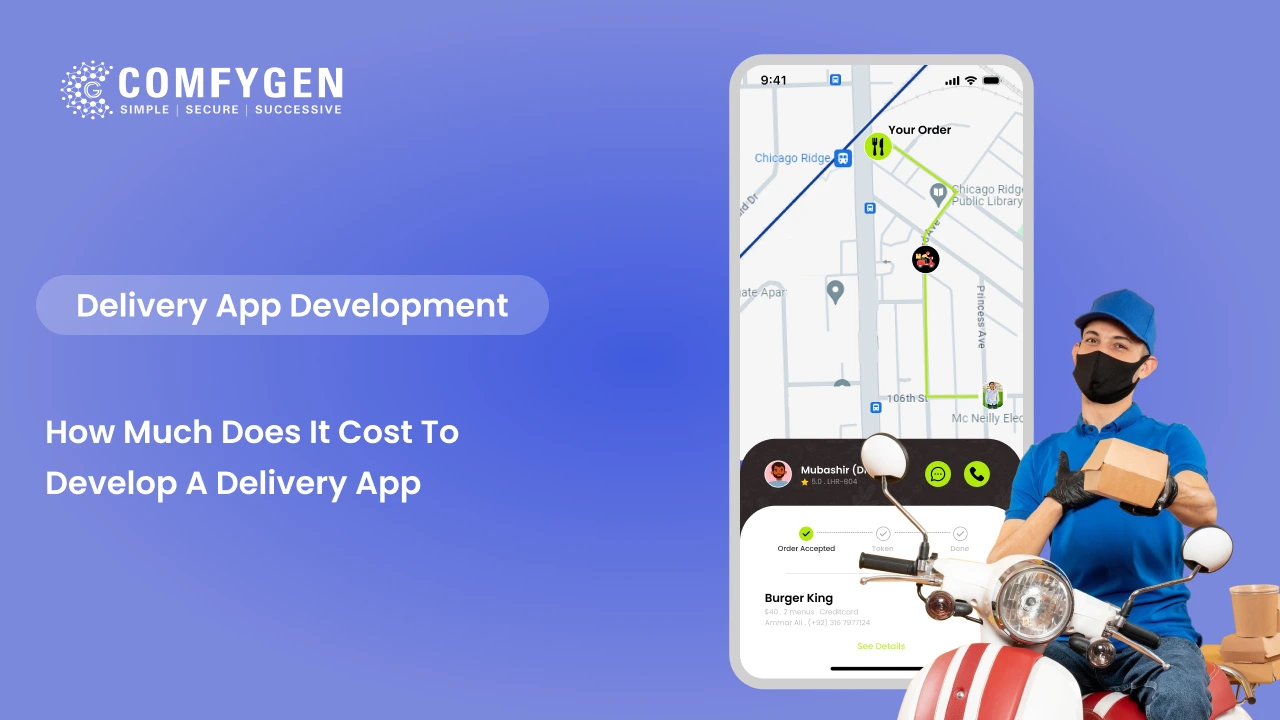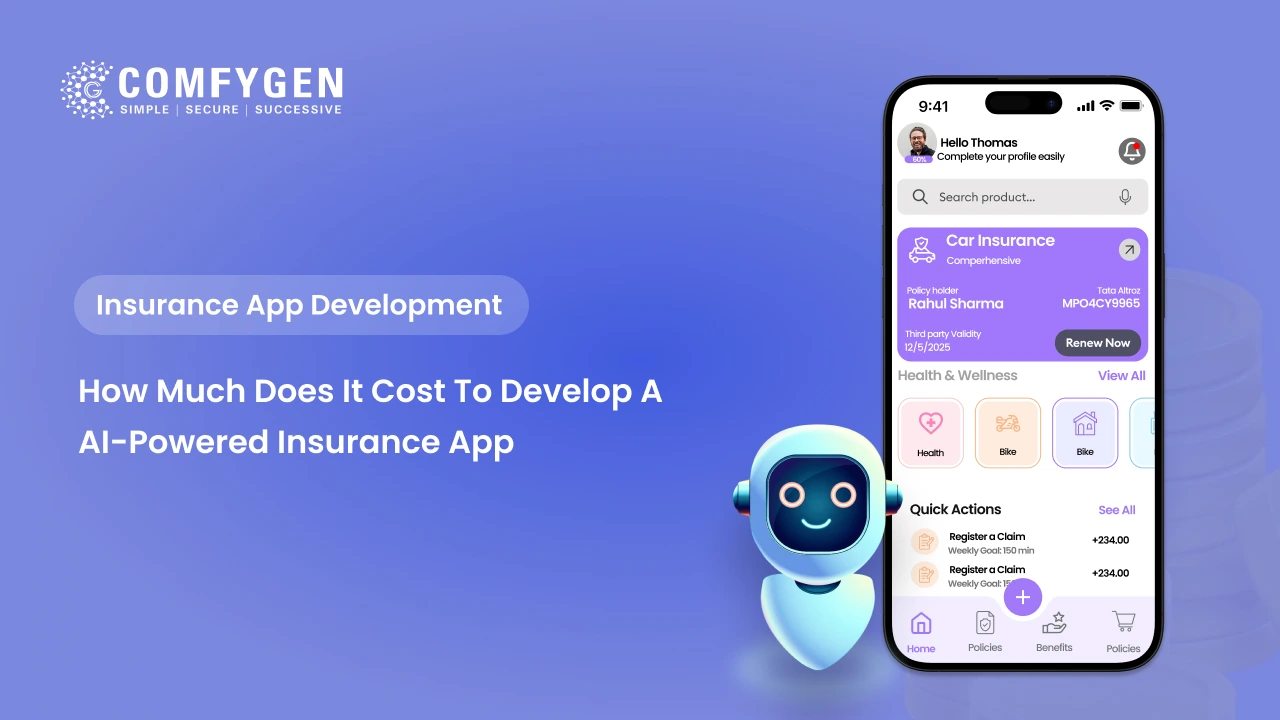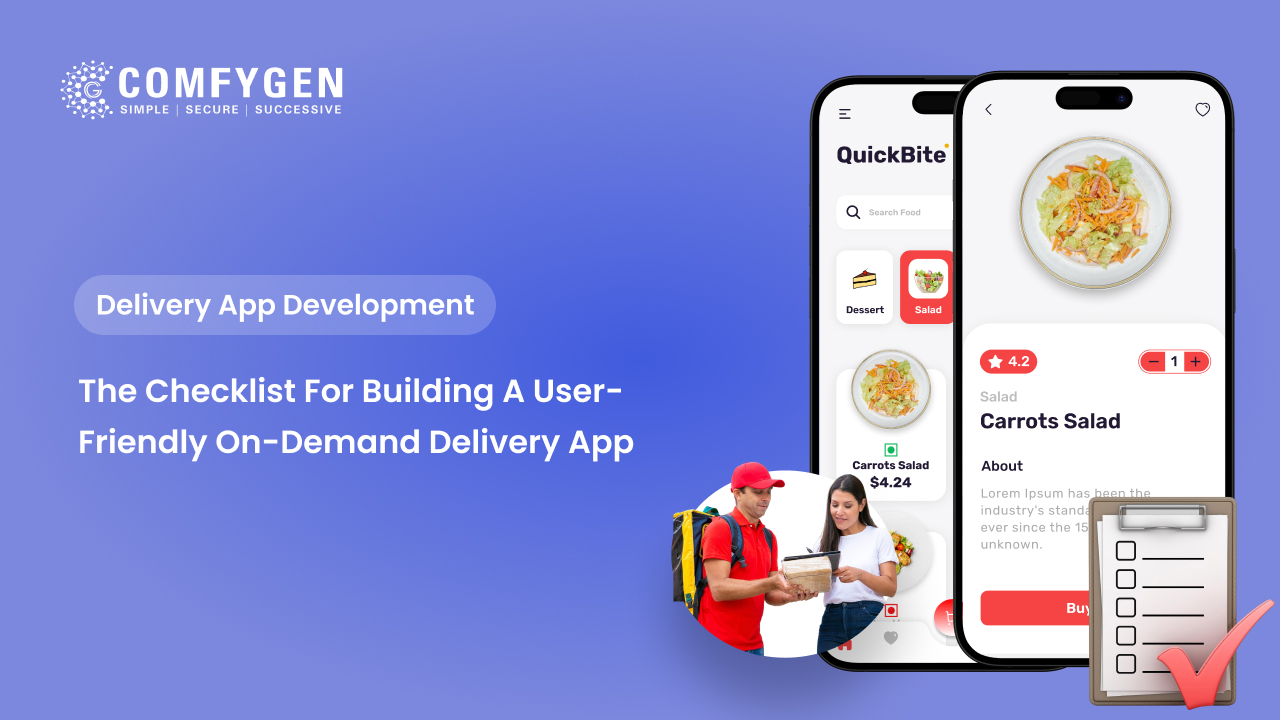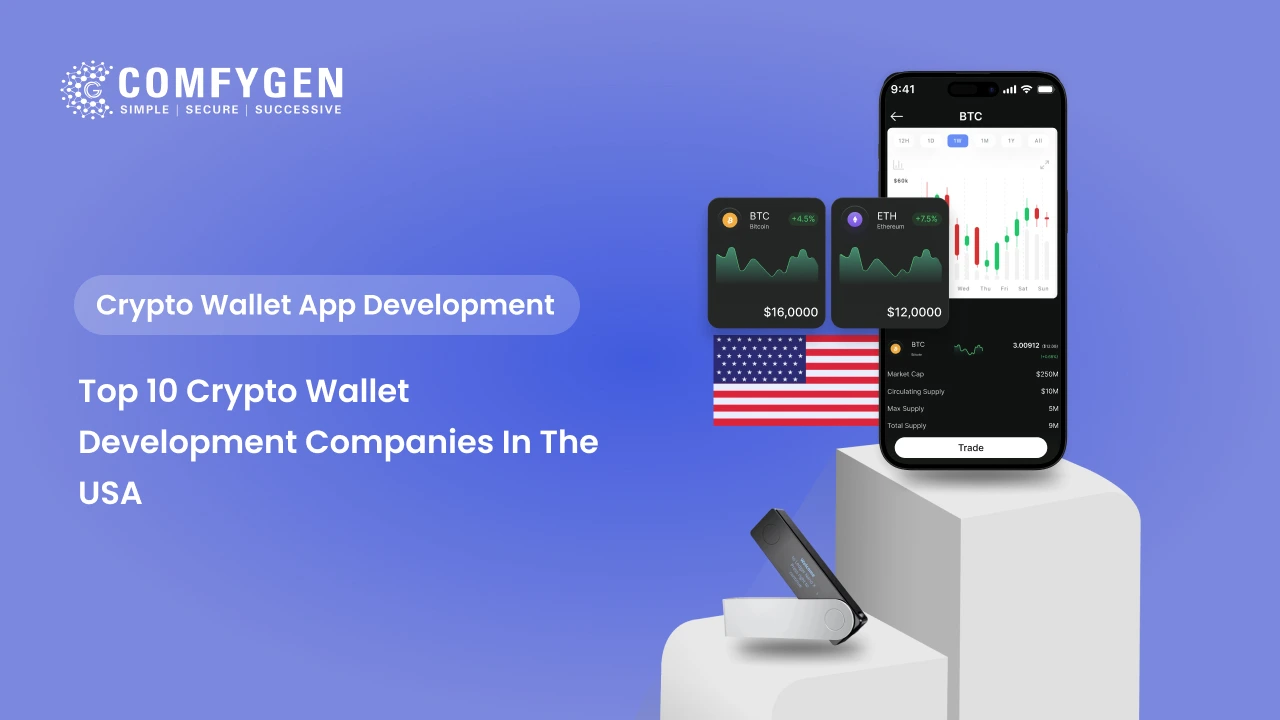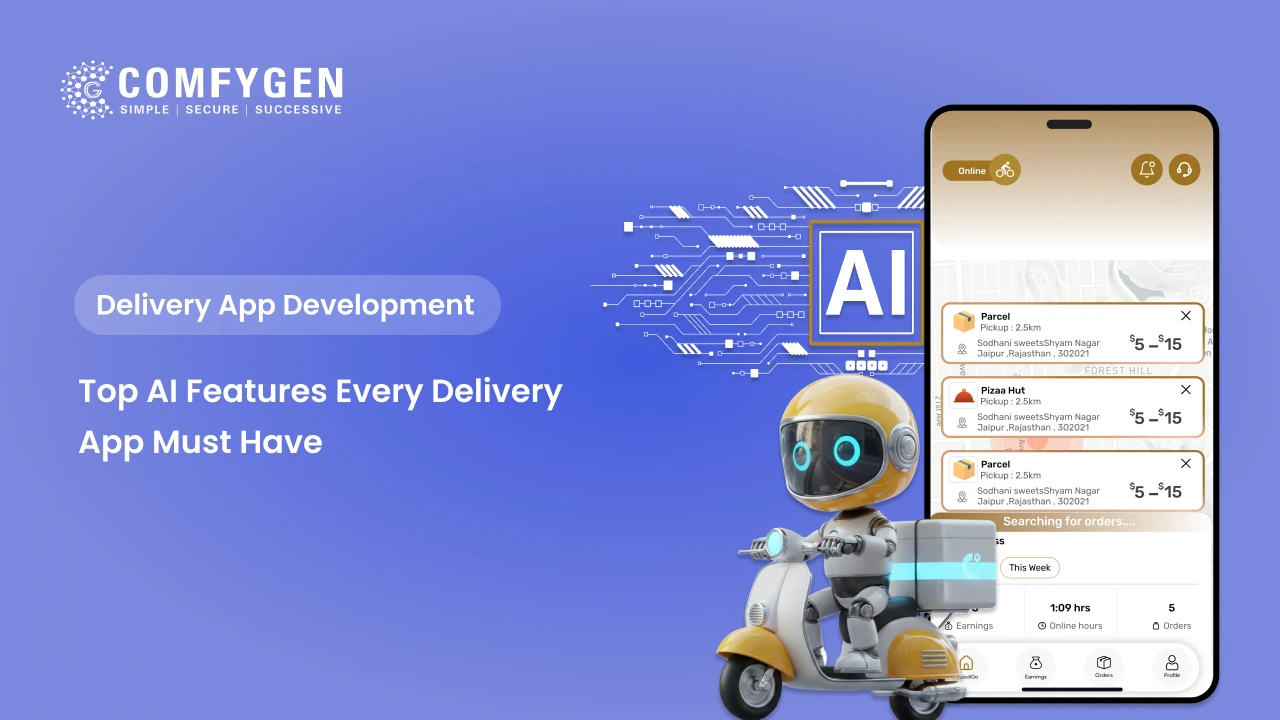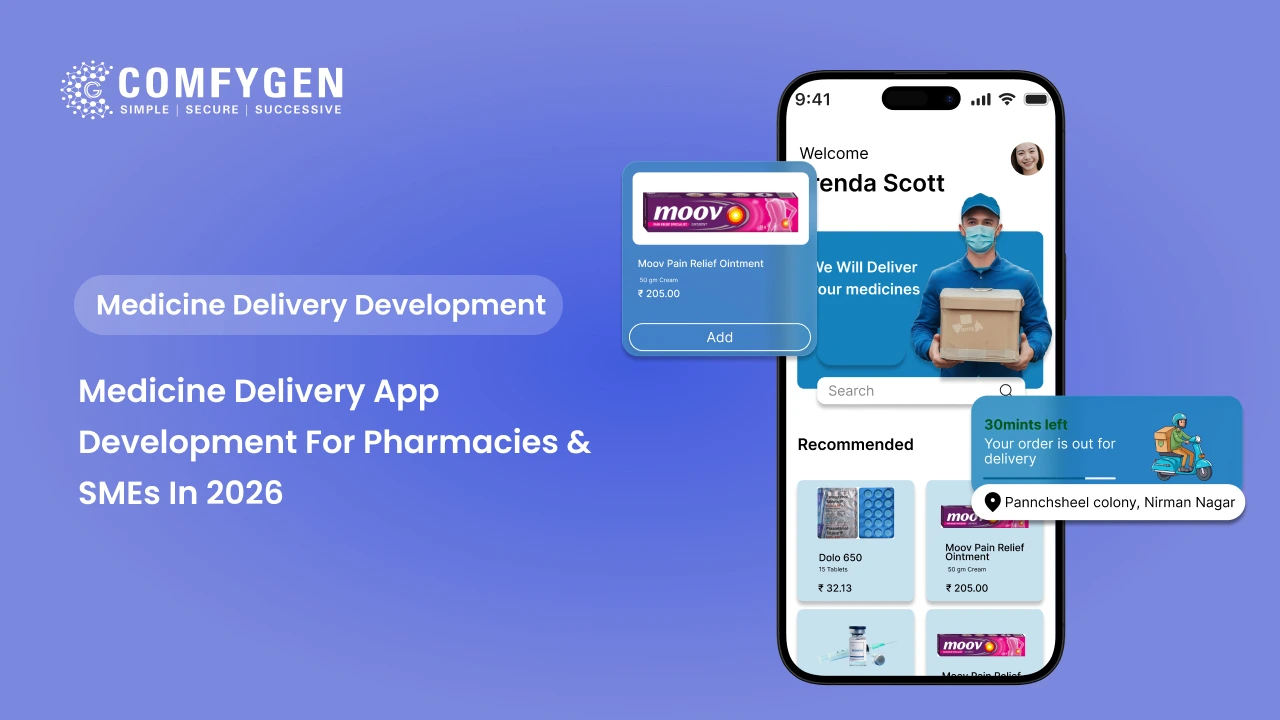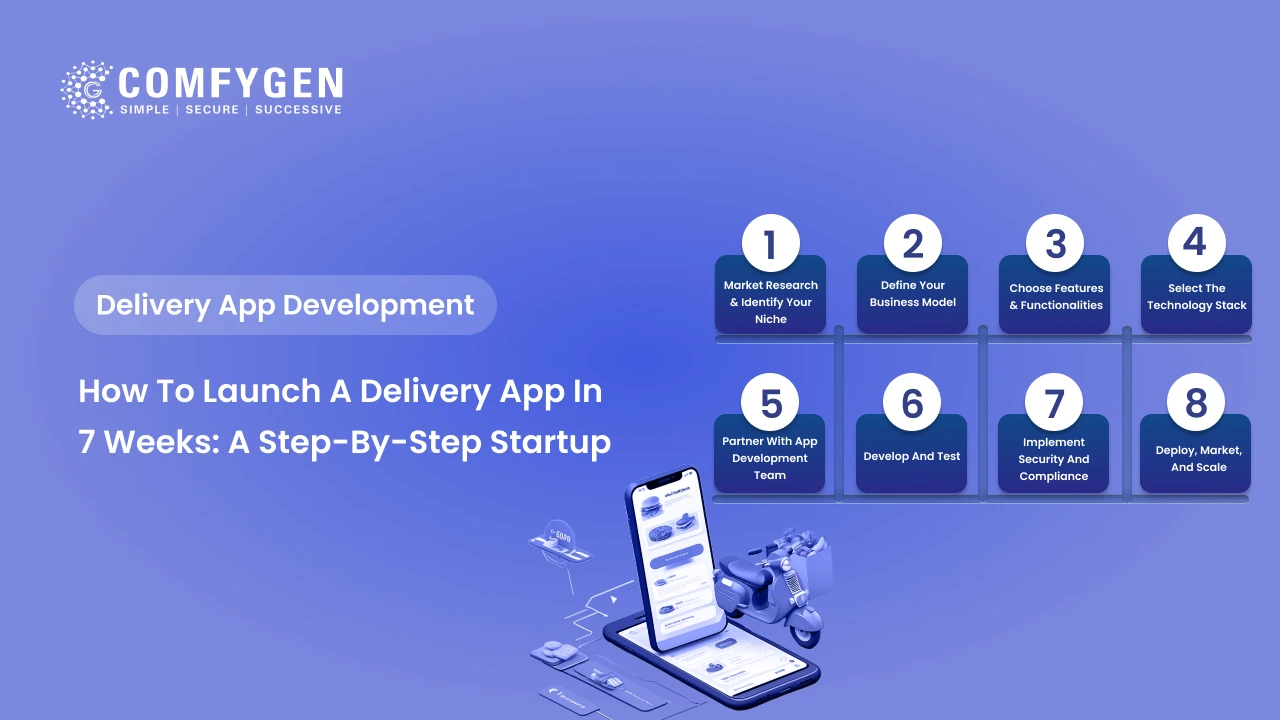How Much Does it Cost to Develop a Delivery App?
The demand for delivery apps has skyrocketed in recent years. From food and groceries to medicine and courier services, people prefer fast and convenient delivery options. For startups and enterprises, investing in a delivery app is no longer optional—it’s essential. But the big question remains: how much does it cost to develop a delivery app?
In this blog, we’ll break down the delivery app development cost, factors that affect pricing, hidden expenses, and how you can save money without compromising quality.
What is a Delivery App?
A delivery app is a mobile solution that connects users with businesses and delivery partners. Depending on the business type, delivery apps can include:
- Food Delivery Apps (like Uber Eats, DoorDash, Zomato)
- Grocery Delivery Apps (like Instacart, BigBasket)
- Medicine Delivery Apps (like 1mg, NetMeds)
- Courier & Parcel Delivery Apps (like Postmates, Dunzo)
Why Invest in Delivery App Development?
Building a delivery app is a smart move for businesses because:
- The global delivery app market is growing rapidly.
- Customers want fast, contactless, and convenient services.
- Delivery apps provide real-time tracking, secure payments, and better user engagement.
- Startups can scale faster with a strong delivery platform.
Factors That Affect Delivery App Development Cost
The cost to develop a delivery app is influenced by several factors that determine the overall pricing. Understanding these will help you plan your budget wisely:
1. App Complexity
As the complexity of the delivery app increases, the delivery app development cost also increases.
- Basic Delivery App: This includes features such as user login, product listing, order placement, payment processing, and tracking.
Estimated cost: $10,000 – $20,000. - Medium-Level App: Comes with additional features such as ratings, reviews, offers, and loyalty programs.
Estimated cost: $20,000 – $40,000. - Advanced Delivery App: Equipped with AI chatbots, voice assistance, multi-language support, and advanced analytics.
Estimated cost: $40,000 – $80,000+.
2. Platform Choice
Choosing the right platform also impacts delivery app development pricing.
- Android app development cost and iOS app development cost can differ.
- Cross-platform delivery apps are more cost-effective as they allow one codebase for both platforms, saving up to 30–40% of the budget.
3. UI/UX Design
A simple design costs less, while advanced animations, branding, and interactive features increase the delivery app cost estimation. A well-designed app ensures better user engagement and retention.
4. Development Team Location & Rates
Where you hire your developers makes a big difference in pricing:
- USA/UK: $80 – $150/hour
- UAE/Europe: $50 – $100/hour
- India: $20 – $50/hour (most affordable option for startups)
Hiring an experienced delivery app development company in India can significantly reduce costs without compromising quality.
5. Technology Stack
The technologies used to build your delivery app—such as native development frameworks, APIs, cloud hosting, and security protocols—directly influence the delivery app development cost. Advanced tech stacks ensure better scalability and performance.
6. Third-Party Integrations
Modern delivery apps rely heavily on integrations, which add to the cost:
- GPS tracking for real-time order updates
- Payment gateways for secure transactions
- Push notifications for user engagement
- Chat support & CRM tools for customer service
Average Cost to Develop a Delivery App
The average on-demand delivery mobile app development budget usually falls between $15,000 – $60,000. However, the exact cost to create a delivery app depends on factors such as features, design, platform, and region of development.
Building an MVP delivery app (with limited but essential features) is more affordable, while a full-featured delivery app with advanced integrations and custom designs costs more.
Here’s a detailed breakdown:
Food Delivery App Development Cost
A food delivery app like Uber Eats, Zomato, or DoorDash typically costs between $20,000 – $50,000.
The price depends on must-have features such as:
- User login and profile management
- Restaurant listing & menu management
- Real-time order tracking
- Multiple payment gateways
- Ratings, reviews, and offers
Adding advanced features such as AI-driven recommendations, loyalty programs, and multi-language support will increase the overall food delivery app development cost.
Want to Develop the Best Food Ordering
Application Like Talabet?
Let’s Connect
Grocery Delivery App Development Cost
The grocery delivery app development cost ranges from $15,000 – $40,000, making it one of the most affordable delivery app types.
Essential features include:
- Product catalog with categories
- Cart & checkout system
- Order scheduling
- Real-time delivery tracking
- Secure payment methods
If you plan to build a grocery delivery app like Zepto, Instacart or BigBasket, then integrating inventory management, AI-based shopping suggestions, and subscription plans will add to the overall delivery app cost estimation.
Medicine Delivery App Development Cost
Developing a medicine delivery app like 1mg or NetMeds generally costs between $20,000 – $45,000.
These apps need additional compliance and safety features such as:
- Prescription upload system
- Verified pharmacy listings
- Dosage reminders and notifications
- Payment & insurance integration
- GPS-enabled delivery tracking
Due to regulatory and security requirements, the medicine delivery app development cost is higher compared to grocery apps.
Courier Delivery App Development Cost
A courier delivery app similar to Postmates or Dunzo typically costs $18,000 – $35,000.
Key features include:
- Package pickup & drop scheduling
- Live tracking with route optimization
- Secure in-app payments
- Proof of delivery (POD)
- Delivery partner management
The courier delivery app development cost can increase if you include advanced logistics management, API integration, and fleet tracking systems.
Quick Cost Comparison on Delivery App Development
| Type of Delivery App | Estimated Development Cost |
| Food Delivery App | $20,000 – $50,000 |
| Grocery Delivery App | $15,000 – $40,000 |
| Medicine Delivery App | $20,000 – $45,000 |
| Courier Delivery App | $18,000 – $35,000 |
Ready to Build Your Own Delivery App?
Let’s Discuss
Cost Breakdown by Delivery App Features
When planning delivery app development, the overall cost estimation largely depends on the features you include. A delivery app usually consists of three main panels—the Customer App, Delivery Partner App, and Admin Panel. Below is a detailed feature-wise cost breakdown:
1. Customer App Features
The customer app is the front-end of your platform where users interact, place orders, and track deliveries.
Key features include:
- User Registration & Login → $1,000 – $2,500
- Browse & Order Products (catalog, search filters, add to cart) → $2,000 – $5,000
- Multiple Payment Options (UPI, cards, wallets, COD) → $2,000 – $4,000
- Real-Time Order Tracking with GPS → $3,000 – $6,000
2. Delivery Partner App Features
The delivery partner app is designed for drivers/agents to manage orders and optimize routes.
Key features include:
- Profile & Verification System → $1,000 – $2,500
- Delivery Request Alerts & Notifications → $1,500 – $3,000
- Route Optimization with GPS Navigation → $2,500 – $5,000
- Earnings Dashboard & Delivery History → $1,500 – $4,000
3. Admin Panel Features
The admin panel allows businesses to manage users, deliveries, and transactions efficiently.
Key features include:
- Order & User Management Dashboard → $2,000 – $4,500
- Analytics & Reporting Tools → $2,500 – $5,000
- Payment & Commission Tracking System → $1,500 – $4,000
- Promotions, Notifications & Offers Management → $1,000 – $3,500
Total Estimated Feature-Wise Cost to Develop a Delivery App
| Panel | Feature-Wise Cost Range |
| Customer App | $8,000 – $20,000 |
| Delivery Partner App | $6,000 – $15,000 |
| Admin Panel | $7,000 – $18,000 |
Hidden Costs of Delivery App Development
When estimating the cost to develop a delivery app, many businesses only consider the initial development expenses. However, several hidden costs directly impact the long-term delivery app development cost estimation. Ignoring these can affect your app’s performance, security, and user experience.
App Maintenance
After launching your delivery app, ongoing maintenance is essential. This includes fixing bugs, updating libraries, improving the UI/UX, and ensuring compatibility with the latest Android and iOS versions.
Most businesses spend around $1,000 to $3,000 per year on app maintenance cost for delivery apps. Investing in regular updates helps keep your platform smooth, secure, and scalable, ensuring a reliable experience for your users.
Marketing & Promotions
Creating the app is just the first step. To attract users and grow your customer base, you need marketing and promotional efforts. This can include SEO optimization, social media campaigns, paid ads, influencer collaborations, and referral programs.
Depending on your strategy, marketing costs can range from $2,000 to over $10,000. Proper promotion ensures higher downloads, better user engagement, and increased brand visibility.
Server & Hosting Charges
Delivery apps rely heavily on real-time operations like GPS tracking, order updates, and payment processing. Therefore, investing in reliable server and hosting infrastructure is crucial.
On average, businesses spend $20 to $200 per month on cloud hosting services like AWS, Google Cloud, or Azure, depending on app traffic and scalability requirements. Adequate hosting ensures fast performance and prevents downtime.
Regular Updates & Security
Technology and user expectations are constantly evolving. To stay competitive, your delivery app requires regular updates with new features and UI enhancements.
Additionally, you must invest in security upgrades, such as data encryption, secure payment gateways, and fraud prevention systems.
Most companies spend around $1,500 to $5,000 annually on updates and security to maintain trust and app reliability.
Advanced Technology-Based Delivery App Development Cost
In today’s competitive market, businesses are integrating emerging technologies into delivery apps to provide smarter, faster, and more secure services. While this enhances user experience and business efficiency, it also increases the overall delivery app development cost. Here’s a detailed breakdown:
Artificial Intelligence (AI)
Adding AI based delivery app development features like personalized product recommendations, demand forecasting, chatbots, and smart delivery route optimization can increase development costs by $5,000 – $15,000. AI-powered apps improve efficiency, boost customer engagement, and reduce operational costs.
Internet of Things (IoT) Integration
IoT enables real-time order tracking, smart warehousing, and fleet monitoring using connected devices. Integrating IoT into a delivery app may cost between $3,000 – $10,000. This ensures better logistics management and transparency for users.
Blockchain
Blockchain enhances security, transparency, and trust in delivery apps, especially for payments and supply chain tracking. Incorporating blockchain technology can add $7,000 – $20,000 to the total cost, depending on smart contract implementation and decentralized storage.
Cloud Computing
Cloud integration supports scalable servers, secure data storage, and fast performance across devices. The cost of adding cloud-based delivery app solutions typically ranges from $2,000 – $8,000, depending on the provider and storage requirements.
Big Data & Analytics
Big Data helps businesses analyze user behavior, purchase patterns, delivery times, and market trends. Adding data-driven analytics dashboards can cost between $4,000 – $12,000 but provides long-term benefits for decision-making and customer retention.
Want to Create a Unique Delivery App
with Advanced Features
Get A Free Quote
Ways to Reduce Delivery App Development Cost
Building a delivery app can be expensive, but there are several strategies to reduce the overall delivery app development cost without compromising quality or user experience.
Start with an MVP Version
Launching a Minimum Viable Product (MVP) delivery app allows you to include only essential features initially. This reduces development time and cost while letting you test your idea in the market.
Once your app gains traction, you can gradually add advanced features like AI-based recommendations, chat support, or loyalty programs. Starting with an MVP helps control the delivery app development pricing while minimizing financial risk.
Use Cross-Platform Development
Instead of building separate apps for iOS and Android, consider cross-platform delivery app development. Platforms like Flutter or React Native allow you to write one codebase for multiple platforms, reducing development time and cost by up to 30–40%.
Cross-platform apps are cost-effective, faster to launch, and maintain a consistent user experience across devices.
Choose a Reliable and Affordable Delivery App Development Company
Selecting the right delivery app development company is crucial. Experienced companies offer custom solutions at competitive rates, help you avoid costly mistakes, and ensure your app is scalable and secure. Outsourcing to a trusted delivery app development agency reduces unnecessary overheads and keeps your delivery app development cost estimation realistic.
Use White-Label Delivery App Solutions
White-label mobile app development solutions are ready-made apps that can be customized with your branding. Using white-label delivery apps can save a lot of time and money, as the core app features are already developed. This approach is ideal for startups and small businesses looking to enter the delivery market quickly while keeping costs low.
Outsource Development to Cost-Effective Regions
Outsourcing your affordable delivery app development to regions like India can significantly reduce hourly rates without compromising quality. Skilled food delivery app developers in India offer affordable delivery app development services, making it easier to stay within budget while still getting a fully functional, high-quality app.
How Comfygen Can Help Build Your Delivery App
Comfygen Technologies is a top-rated delivery app development company with years of experience in creating custom, scalable, and high-performing delivery apps for businesses of all sizes. Whether you are a startup or an established enterprise, we offer best food delivery app development services that cater to your specific needs.
We specialize in developing:
- Food Delivery Apps – Designed to offer smooth menu browsing, real-time order tracking, multiple payment options, and user-friendly interfaces.
- Grocery Delivery Apps – Feature-rich apps with product catalogs, scheduling options, secure payments, and efficient inventory management.
- Medicine Delivery Apps – Compliant apps with prescription uploads, verified pharmacy listings, dosage reminders, and secure delivery tracking.
- Courier & Parcel Delivery Apps – Streamlined apps for scheduling pickups, live route tracking, delivery partner management, and proof of delivery.
Our delivery mobile app development team uses advanced technology stacks and best practices to deliver apps that are fast, secure, and scalable. From concept development and UI/UX design to development, testing, launch, and ongoing maintenance, Comfygen ensures your best delivery app is fully optimized for performance, user engagement, and business growth.
By choosing Comfygen, you get a complete delivery app development solution that not only meets your business goals but also helps you stand out in the competitive on-demand delivery app market.
Conclusion
The cost to develop a delivery app varies depending on features, design, technology, and region. On average, expect to spend $15,000 – $60,000. Start small with an MVP, scale gradually, and partner with the right pizza delivery app development company to optimize costs.
If you’re ready to launch your delivery app, Comfygen can help you build a powerful custom delivery mobile app development solution tailored to your business needs.
FAQs
How Much Does it Cost to Develop a Delivery App in India, USA, and UAE?
Cost to Develop a Delivery App in India
In India, the delivery app development cost is relatively affordable, ranging from $15,000 to $35,000 for a medium-complexity app.
Factors influencing the price include app type (food, grocery, medicine, or courier), platform (Android, iOS, or cross-platform), and UI/UX design. India is a popular choice for startups and small businesses because it offers cost-effective delivery app development services without compromising quality.Cost to Develop a Delivery App in USA
In the USA, the cost of developing a delivery app is higher due to higher developer rates and operational costs.
A basic delivery app development cost in the USA $40,000 – $70,000, while a feature-rich app with advanced analytics, real-time tracking, multiple payment gateways, and AI features can go up to $80,000 – $120,000. Choosing a reliable delivery app development company in the USA ensures compliance with local regulations and quality standards.Cost to Develop a Delivery App in the UAE
In the UAE, the delivery app development pricing ranges between $30,000 and $60,000, depending on complexity, platform, and integrations.
Apps with multiple advanced features like GPS tracking, subscription plans, chat support, and third-party integrations will cost more. Many businesses in the UAE prefer custom delivery app development solutions to meet local market needs and provide an excellent user experience.How long does it take to build a delivery app?
What is the maintenance cost of a delivery app?
Is it cheaper to build a cross-platform delivery app?
Can startups build a delivery app on a low budget?

Mr. Saddam Husen, (CTO)
Mr. Saddam Husen, CTO at Comfygen, is a renowned Blockchain expert and IT consultant with extensive experience in blockchain development, crypto wallets, DeFi, ICOs, and smart contracts. Passionate about digital transformation, he helps businesses harness blockchain technology’s potential, driving innovation and enhancing IT infrastructure for global success.

